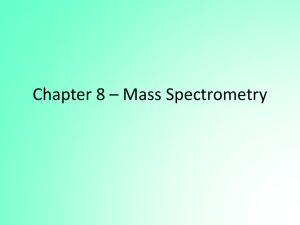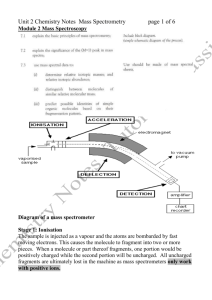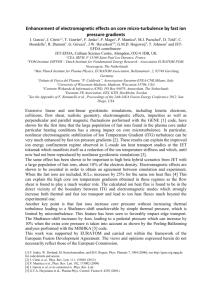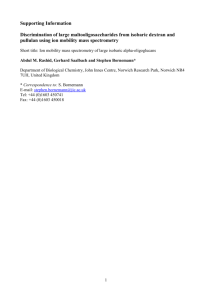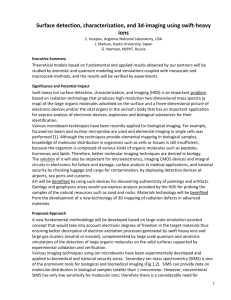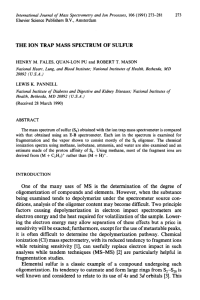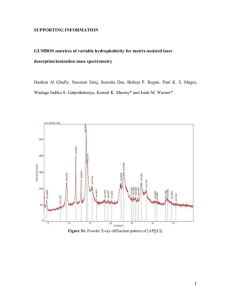Mass Spectrometry Explained: Principles & Applications
advertisement
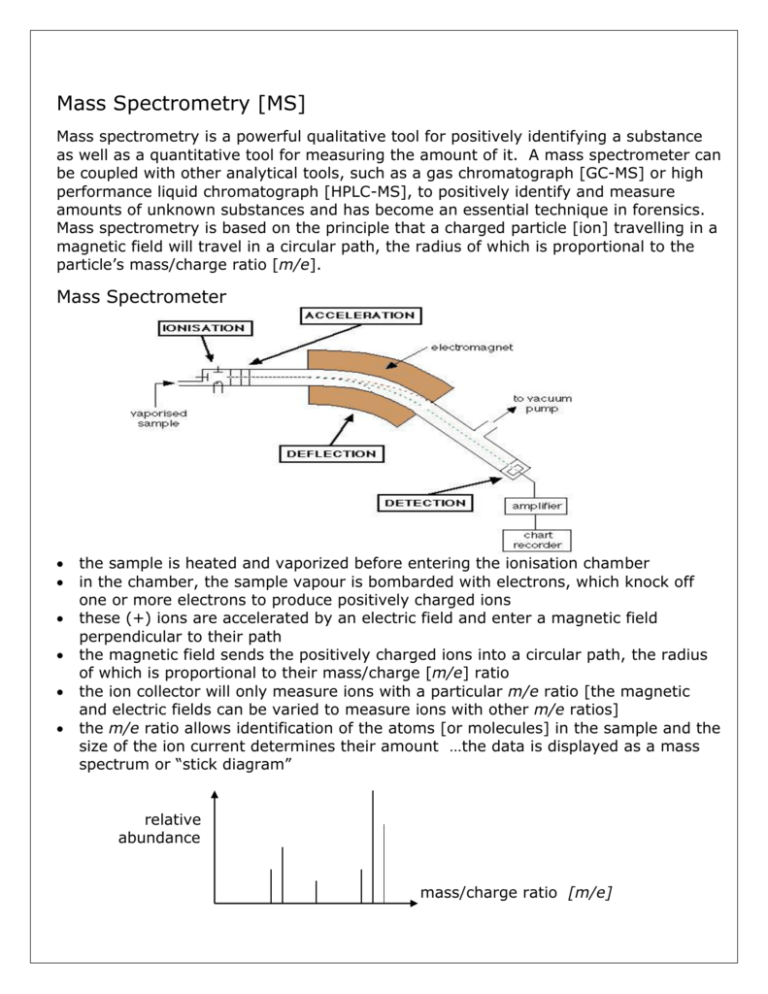
Mass Spectrometry [MS] Mass spectrometry is a powerful qualitative tool for positively identifying a substance as well as a quantitative tool for measuring the amount of it. A mass spectrometer can be coupled with other analytical tools, such as a gas chromatograph [GC-MS] or high performance liquid chromatograph [HPLC-MS], to positively identify and measure amounts of unknown substances and has become an essential technique in forensics. Mass spectrometry is based on the principle that a charged particle [ion] travelling in a magnetic field will travel in a circular path, the radius of which is proportional to the particle’s mass/charge ratio [m/e]. Mass Spectrometer the sample is heated and vaporized before entering the ionisation chamber in the chamber, the sample vapour is bombarded with electrons, which knock off one or more electrons to produce positively charged ions these (+) ions are accelerated by an electric field and enter a magnetic field perpendicular to their path the magnetic field sends the positively charged ions into a circular path, the radius of which is proportional to their mass/charge [m/e] ratio the ion collector will only measure ions with a particular m/e ratio [the magnetic and electric fields can be varied to measure ions with other m/e ratios] the m/e ratio allows identification of the atoms [or molecules] in the sample and the size of the ion current determines their amount …the data is displayed as a mass spectrum or “stick diagram” relative abundance mass/charge ratio [m/e] The Mass Spectrum In the mass spectrum of an element, each peak represents a different isotope of that element … the isotopic masses and % abundance being used to calculate the relative atomic mass of the element. The mass spectrum of an organic compound is quite different, each line in the spectrum representing either the molecular ion or molecular fragments of it Fragmentation of an Organic Molecule Consider ethanoic acid vapour entering the ionization chamber of a mass spectrometer a high energy electron knocks 1 electron off the molecule to produce a positive ion CH3COOH + e- .CH3COOH+ + 2emolecular ion this molecular ion, .CH3COOH+, will have the highest m/e ratio [=60] and be found at the end of the mass spectrum the molecular ion, being a radical with a bonding electron knocked off it, is chemically unstable and may fragment into smaller fragments … CH3COOH+ CH3+ + .COOH uncharged free radical fragment ion [m/e = 15] fragmentation continues, producing other positively charged fragment ions and uncharged free radicals … only the positive ions reach the detector and are included in the mass spectrum. Simplified Mass Spectrum of Ethanoic Acid [CH3COOH] 100 [43] CH3CO+ relative abundance [45] COOH+ [60] the highest peak is called the base peak and is given a relative abundance of 100% [15] CH3+ 15 20 [29] COH+ 25 30 molecular ion CH3COOH+ [42] CH2CO+ 35 40 45 50 55 60 [m/e] The presence of and the intensity of an ion peak depends on how readily the fragment forms and how stable it is Example of Mass Spectroscopy An organic mixture of alkanes was separated by gas chromatography. One separated compound from the GC column, pentane, was passed into the ionisation chamber of a mass spectrometer, resulting in the following mass spectrum … 1. Which of the peaks in the mass spectrum is the molecular ion? [Explain your reasoning] 2. Which of the peaks in the mass spectrum is the base peak? 3. Identify and write the semi-structural formula of the ions recorded with a mass/charge ratio of:(a) 29 (b) 43 (c) 57 (d) 72 4. Write an equation showing the formation of the ion with an m/e ratio of 57. 5. Suggest what ion fragments are causing lines at m/e = 55 and 56.
